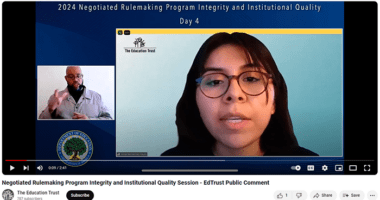How FAFSA Delays Will Impact College-Going Decisions of Low-Income Students and Students of Color
Well, there’s good news and bad news. On the plus side, the normally arduous Free Application For Federal Student Aid (FAFSA) has been simplified — pared down from 108 questions to 36. However, there’s been a delay in releasing the form for the 2024-25 school year. Normally, the open period starts in October; but this year, the Department of Education announced the students can’t start applying until December 31st. This delay is likely to have a significant impact on if and where students from low-income backgrounds and students of color enroll in college.
The first problem is that since the release date falls during winter break, students — especially first-generation and students from low-income backgrounds — will have to wait to get help from school counselors or support organizations to complete the new FAFSA application. And getting that FAFSA form submitted ASAP is essential, because it’s first step in the process for any student to receive their financial aid offer from colleges and universities.
This delayed process has a domino effect: Now, the release of students’ financial data to colleges won’t happen until the end of January. This means that campus financial aid officers won’t be able to build out students’ financial aid packages until February at best — which may impact students’ eligibility for some state financial aid programs, because several states operate on a first-come, first-served basis with their financial allotment. So, many students may lose out on receiving any state aid.
And an overwhelming number of students depend on financial aid to be able to afford college. Nearly 84% of students receive some type of financial aid, and among students of color, the use of financial aid to pay for college is even higher: among Black students, 88% received some type of financial aid, 87% of Native students and 82% of Latino students.
At a time when college enrollment seems to be bouncing back from pandemic levels, delays in financial aid award letters may impact students’ decision to enroll or return to college — because now, the entire awarding timeline for campus financial aid offices has been compromised. At best, new students will receive their financial aid offers in mid to late February (but most likely in March); and returning students may not receive award offers until April or May. And students who are selected for verification will receive award letters even later. This has a direct impact on where or whether a student will go to college. Some students are dependent on or waiting to hear from colleges about their financial aid packages to make a decision: they could have the difficult decision on whether to submit a deposit to hold their spot without a financial aid award letter; or choose to enroll at a lower-priced, or lower-quality institution. Some students may even opt to delay enrollment for a year — or permanently.
Given the pushback on the timeline of receiving financial aid award letters nationally, higher education institutions should delay the May 1st national deposit deadline for accepting admission offers. Admissions officers should notify students about the delay and provide a timeline for students to receive their award offers. Students who have been traditionally the most dependent on aid (like Pell Grant recipients) should be prioritized in the awarding of aid. And states should allocate additional funding for need-based aid or relax state-imposed deadlines for state financial aid programs.
Enrollment of students of color has begun to rebound after years of decline, so the implications for students from low-income backgrounds and students of color is especially concerning. Higher institution leaders must make sure that they take the necessary steps to ensure that delays in the release of the FAFSA and the release of student data to campuses will not impact the very students who stand to benefit the most from going to college and earning a degree.






